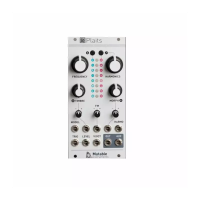is specific to each voice, and there will actually be a small amount of
detuning/dephasing between them, for a richer sound.
Consider the example of a guitarist playing a guitar through a tremolo pedal, and applying a vibrato
on a particular note. If you want to program something similar, you will use the
vibrato (because it is slightly different and desynchronized for each individual note) ; and you will use
for the tremolo, since it uniformly affects all the notes. Another example: you have found
the perfect combination of LFOs to create a trancey gated strings sound. The last thing you want is to
have each note of the chord triggered at a slightly different instant due to difference in timings when
the chord is played. You need a
is good for sync’ing things up.
can be controlled in the modulation matrix (because it can be
controlled by velocity, aftertouch, etc. — all kind of things that might be different for each played note)
can be synchronized to tempo.
distinction sounds confusing, and there is actually little documentation
about it. Most classic analog synthesizers do not have one
circuit per voice, so their behaviour is
accurately simulated by the use of
. Some VAs, like the access Virus, use
the Waldorf Blofeld, each
by default and can be turned into a
Lfo/eg 1|rate 24|wave tri|trig free
attk 0|deca 40|sust 20|rele 60
/ envelope generator to edit. The settings shown on the page are relative to
/ EG. If you are wondering if there is such thing as a “filter envelope” and “
envelope”... Yes, by default env2 is mapped to cutoff and env3 to the
; but this can be changed
in the modulation matrix by patching pranksters.
rate. The first values (1/1 to 1/96) are note values relative to the global tempo (or to an
clock). For example, if set to 1/4, the
will play one cycle every quarter note. The
other values are increasing frequencies, from 0.06 Hz (0) to 100 Hz (127).
waveforms is given below.
Ambika – User manual | Mutable Instruments http://mutable-instruments.net/ambika/manual
21 of 44 2/17/17 4:58 PM

